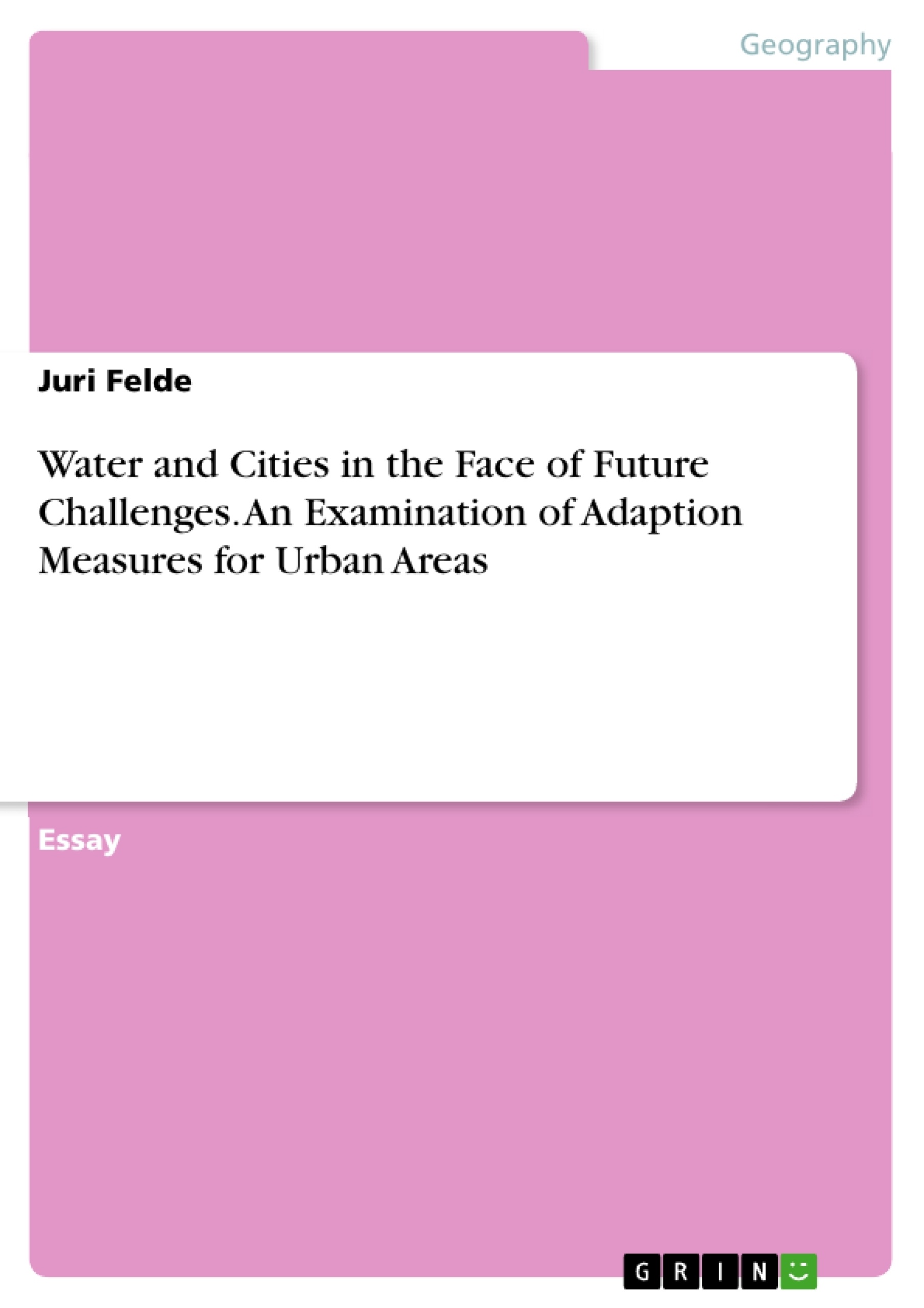As cities around the globe continue to grow and urbanize, the need for effective adaptation measures to address challenges becomes increasingly urgent. This essay attempts to identify the known vulnerabilities of urban environments and then aims to examine the various opportunities for adaptation in order to ensure water security in the face of global challenges of the 21st century and especially water related extreme weather events. Through a literature review, this paper aims to explore a concise outlook on strategies cities can employ in order to build resilience and complete a transition to urban areas fit for the future.
Global challenges of the 21st century can cause a significant threat to water security in urban areas in the future. Rising temperatures, increased precipitation, and more frequent extreme weather events are transforming the availability and distribution of water resources, leading to increased pressure on water systems and infrastructure. Furthermore, the reduction of permeable green space and loss of floodable urban spaces will increase the vulnerability of urban environments.
Cities are already economic engines of entire regions. About 600 urban regions on earth with 20% of the world’s population contribute 60% of the GWP (gross world product). Moreover, By the year 2050, 70 % of the world’s population will be living in cities and urban areas. Therefore, the demand for water will increase significantly, as well as the number of water stressed areas. Despite the fact that the number of people who have no access to reliable water resources will grow significantly, some areas will be lacking access to any water sources at all or dealing with water pollution issues.
Inhaltsverzeichnis (Table of Contents)
- Introduction
- Future Trends and Challenges in Urban Water Resource Management and Infrastructure
- Social and Economic Factors Shaping the Future of Urban Water Management
- The Impact of Hurricane ‘Sandy' in New York (2012)
- Adaption Measures for a Rapidly Changing Future
- Conclusion
Zielsetzung und Themenschwerpunkte (Objectives and Key Themes)
This essay examines the vulnerabilities of urban environments in the face of global challenges, particularly water-related extreme weather events. It aims to identify adaptation measures that ensure water security for cities in the 21st century.
- The impact of climate change on urban water resources and infrastructure
- The vulnerability of urban areas to flooding and drought
- The role of urban planning in mitigating water-related risks
- Adaptation strategies for ensuring water security in cities
- The importance of social and economic factors in urban water management
Zusammenfassung der Kapitel (Chapter Summaries)
The introduction highlights the increasing threat to water security in urban areas due to climate change and urbanization. It emphasizes the need for effective adaptation measures to address these challenges.
Chapter 2 explores future trends and challenges in urban water resource management and infrastructure. It examines the impact of climate change on water availability, distribution, and infrastructure, highlighting the increasing vulnerability of urban areas to extreme weather events. The chapter then discusses the social and economic factors shaping the future of urban water management, emphasizing the role of urban planning in mitigating water-related risks.
Schlüsselwörter (Keywords)
Urban water management, climate change, adaptation measures, water security, urban planning, extreme weather events, flood risk, drought, infrastructure, social and economic factors.
- Quote paper
- Juri Felde (Author), 2023, Water and Cities in the Face of Future Challenges. An Examination of Adaption Measures for Urban Areas, Munich, GRIN Verlag, https://www.grin.com/document/1340865



